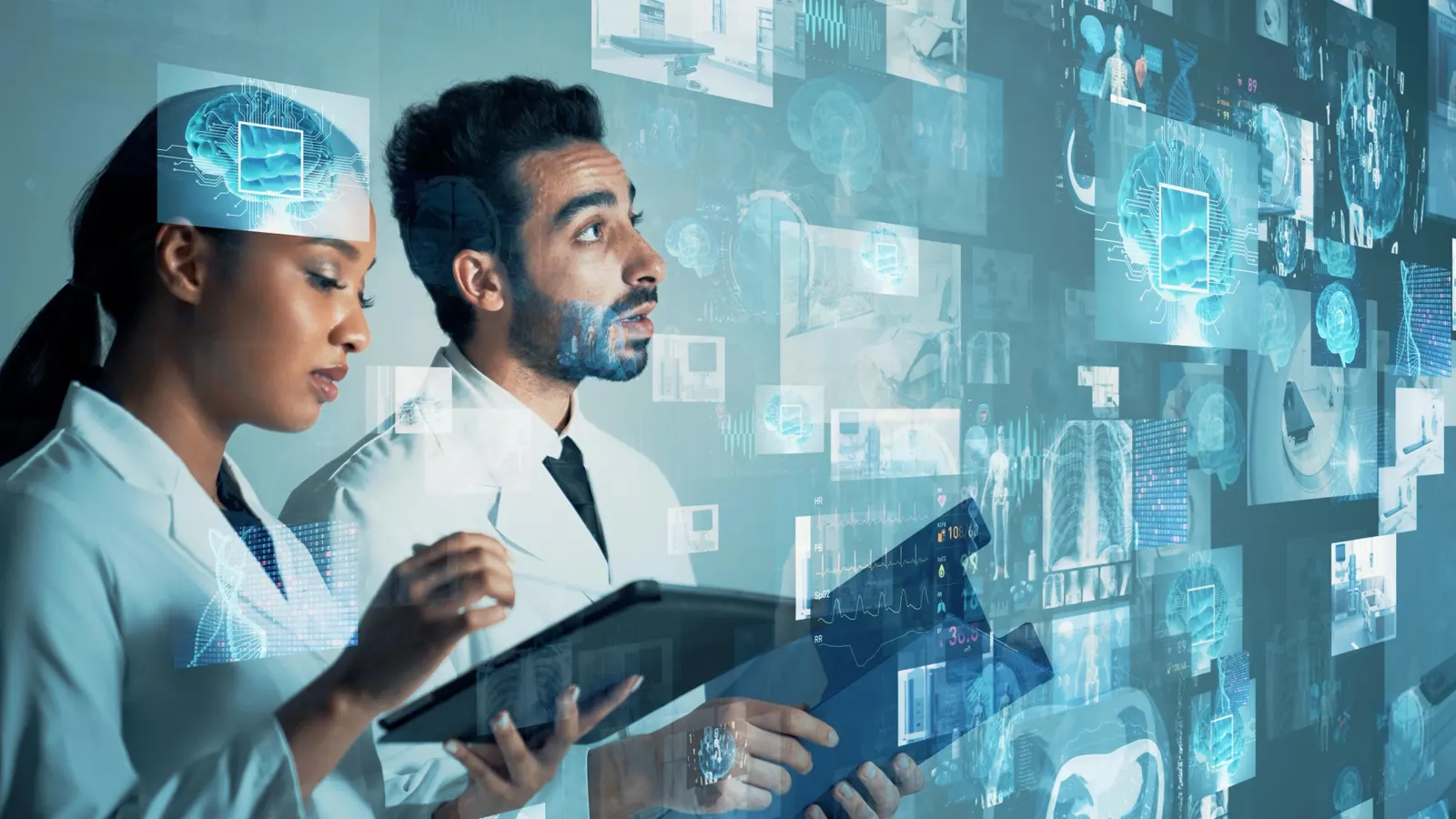Copyright forbes

Medical technology concept. Remote medicine. Electronic medical record. Artificial Intelligence, or AI, is powering phones’ voice assistants or curating streaming playlists; it’s now transforming how we detect, prevent and treat illness, promising earlier interventions, smarter therapies and more affordable care for everyone. Imagine a future where a computer can tell your doctor which disease you’re likely to develop years before symptoms appear or predict the next breakthrough drug just days after its first virtual experiment. In a world where timing is everything, the rapid advances described here could mean the difference between missing a warning sign or receiving routine treatments and cures previously thought impossible. Predictive Health Modeling at Population Scale Delphi-2M, a generative AI trained on massive health datasets from the UK and Denmark, is a prime example. Delphi-2M predicts risks for more than 1,000 conditions by analyzing patient records and simulating outcomes across decades. Research shows its real advantage lies in understanding how multiple diseases interact, generating synthetic patient records for safe research and forecasting population health trends. While it may take years for AI-driven forecasts to guide personal doctor visits, the ability to anticipate health crises and tailor preventive care for growing and aging populations is accelerating behind the scenes. Models like Delphi-2M are already redefining how public health officials, hospitals and insurers consider screening and early intervention, shifting from blunt one-size-fits-all guidelines toward precision strategies that could save more lives and control costs. Automated Discovery and Review: The Rise of Agentic Science Scientific research is undergoing its own transformation. At the recent Agents4Science conference, AI acted as lead investigator, data analyst, draft author and even peer reviewer in a groundbreaking experiment. These AI agents took on every phase of the research cycle: generating hypotheses, crunching datasets, producing manuscripts and assigning preliminary review scores alongside human subject-matter experts. MORE FOR YOU AI agents raced through thousands of manuscripts, spotting patterns and summarizing research faster than teams of scientists ever could. When it came to judging novelty and depth, catching subtle mistakes or weighing which discoveries might truly shift their fields, seasoned human experts were essential. Most of the top papers combined AI-generated drafts and ideas with final edits from people—a hybrid workflow where technological speed meets human discernment. This head-to-head test between machine and human reveals why the scientific frontier needs both. AI World Models: Bridging Heuristics and Robust Reasoning The quest for world models is essential. It allows AI to form an internal understanding of complex environments and rules. The benefits stretch well beyond laboratory research; for health experts, robust world models could help AIs predict disease more reliably, flag rare conditions and strengthen medical decisions when lives are at stake. Current generative AI works well with routine problems but struggles with new or complex situations. Researchers are exploring ways to help these systems understand the bigger picture. AI labs like DeepMind and OpenAI are betting on vast pools of multimodal data like video, sensor data, and virtual worlds. While others, such as Meta, aim to craft fundamentally new designs. Implications and Forward-Looking Insights Generative AI is now tackling preventive medicine, drug design, and rapid biological insights. Models like DrugReflector and Gemma can sift through diverse patient data to pinpoint optimal therapies and decipher how new compounds affect human cells. This slashes the time and expense tied to the trial-and-error tradition in pharmaceutical discovery, potentially bringing lifesaving treatments to patients sooner. As these tools improve, new challenges arise—such as biases that can affect results and the risk of overfitting, which can mislead clinicians by leading them to rely on patterns that aren’t real. Overfitting occurs when an AI model picks up noise or irrelevant details rather than general patterns. As a result, the model performs well on familiar data but makes unreliable predictions when faced with new information. This is why relying on a single source is risky. In the real world, such AI models enable public health officials to forecast care needs more accurately and empower physicians to close the gap between research findings and everyday practice. When used in tandem with human expertise, AI helps move innovation from the page to the patient. Within a few years, AI agents may work autonomously for entire days, deliver expert-level performance across dozens of fields and unlock breakthroughs in medicine and public health planning. The greatest advances will come from true partnership—where clinicians, researchers and algorithms combine their strengths with AI under clear, transparent standards. Editorial StandardsReprints & Permissions



